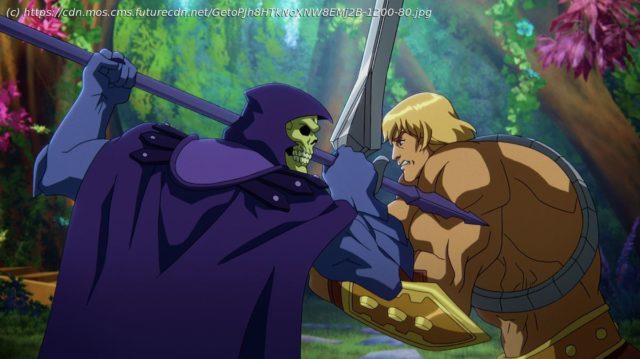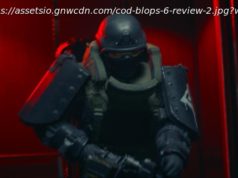How a Mattel toy line became one of the most enduring franchises of the 1980s
In hindsight, it has to go down as one of the biggest errors in licensing history. When George Lucas was shopping around the action-figure rights for an upcoming space opera called Star Wars, the powers-that-be at US toy giant Mattel decided to pass. To be fair, in the mid-’70s, movie and TV licenses weren’t always massively lucrative for toy manufacturers, but their oversight meant that the company behind Barbie found itself playing catch-up with their rivals at Kenner. Mattel didn’t take it lying down, however, and instead of capitalizing on someone else’s franchise, they decided to create an epic fantasy setting of their own. Led by He-Man and his evil rival Skeletor, Masters of the Universe quickly grew into a pop-culture behemoth, as it was turned into a massively popular cartoon series that – conveniently – functioned as a highly effective commercial for the toys. Now, with Kevin Smith’s sequel/reboot Masters of the Universe: Revelation heading to Netflix on July 23, we look back at the history of He-Man, Skeletor and Eternia, a handy guide to help you tell your Moss-Men from your Mer-Men. By the power of Grayskull! Along with Transformers, Masters of the Universe is arguably the most successful toy marketing campaign in history – a precision-guided, multimedia assault on the hearts and minds of ’80s kids that transformed a range of muscle-bound action figures into must-have items on every birthday and Christmas wishlist. Having turned down that lucrative Star Wars deal, Mattel instead decided to create its own franchise. Launched into stores in 1982, it focused on He-Man and his ongoing feud with bony nemesis Skeletor. While the characters’ impressive physiques owed a clear debt to Frank Frazetta’s Conan the Barbarian, this was a world populated by all-new heroes and villains. (It’s interesting to note that, before Masters of the Universe, Mattel had picked up the rights to the Arnold Schwarzenegger-starring Conan movie. Lawyers later decided that the He-Man line hadn’t ripped off Conan.) But Masters of the Universe – which was almost known as Lords of Power, until a Mattel exec pointed out that the title had potential religious associations – had a problem. Unlike Star Wars, this was a toy line without a backstory. Mattel navigated that obstacle in innovative fashion, packaging a mini-comic with every action figure – later comics were even produced by DC. The toy company’s real genius, however, was teaming up with animation studio Filmation – the outfit behind Star Trek: The Animated Series and various ’60s DC cartoons – for a now-iconic TV show. Debuting in 1983, the 130 episodes they produced were a hit around the world, destined to be repeated again, and again, and again. As with ThunderCats, MASK, Teenage Mutant Ninja Turtles and seemingly every other action cartoon of the era, Masters of the Universe’s extremely catchy opening credits do an excellent job of explaining the premise of the series: The TL;DR version goes as follows: on the alien world of Eternia, Prince Adam is transformed into He-Man – self-proclaimed “most powerful man in the universe” – whenever he holds aloft his magic sword and shouts, “By the power of Grayskull!” The iconic Castle Grayskull is the seat of mystical power on Eternia.
Home
United States
USA — software Masters of the Universe: He-Man and more explained ahead of Netflix's new...






